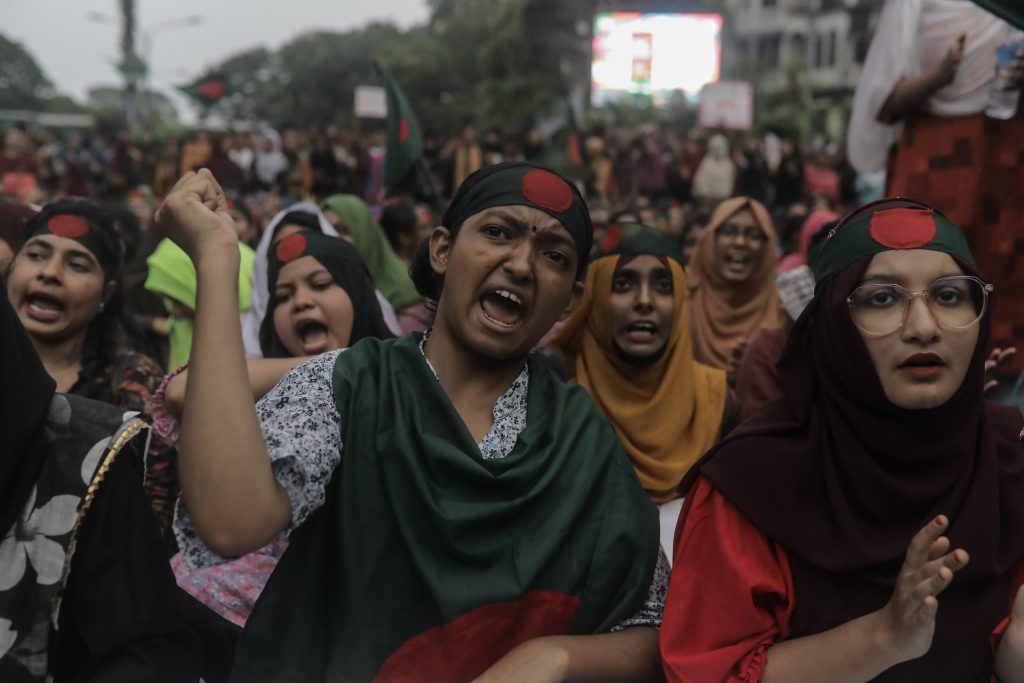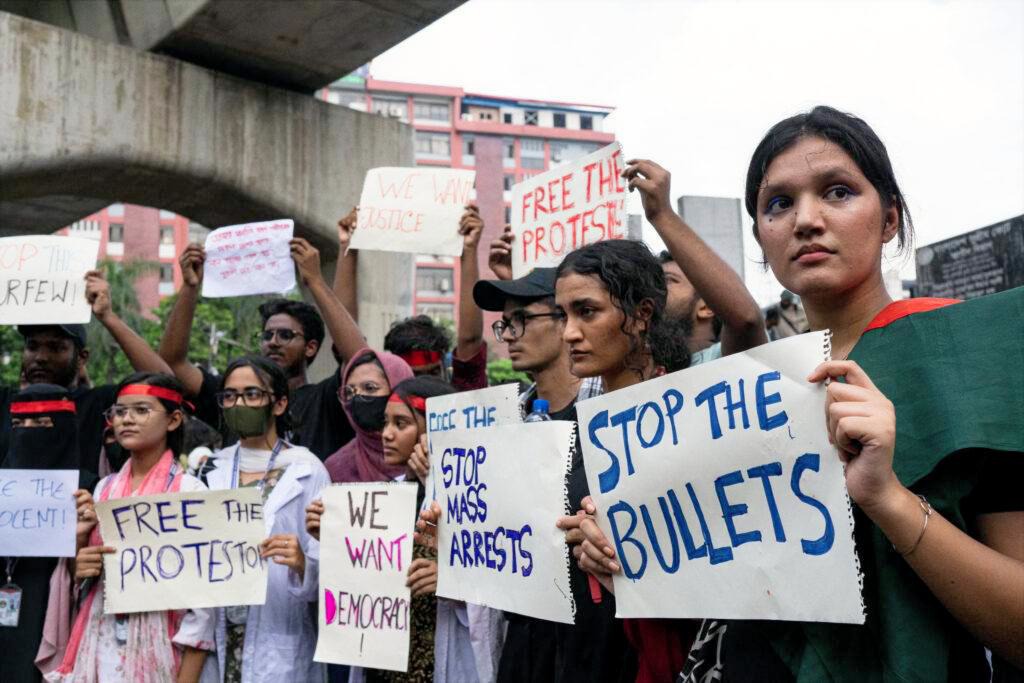Amid sweeping curfews, over 10,000 arrests, and mounting outrage over killings and disappearances, student leaders of the anti-discrimination quota reform movement declared a nationwide “March for Justice” on July 30, 2024 — a pivotal moment in what would soon be remembered as the July Uprising.
The announcement, made just after 11:00 PM via Telegram, came as Bangladesh stood on the brink of one of its most significant civil resistance movements since the 1990 pro-democracy protests. Scheduled for July 31, the march was framed as a unified call for justice, accountability, and an end to state brutality.
The “March for Justice” was not just a reaction to repression — it became a defining moment in what many are now calling the July Uprising, echoing the historical significance of earlier mass democratic movements in Bangladesh’s political history.
Earlier that day on July 30, 2024 in silent but striking defiance, citizens across the country participated in the “Red Cloth Protest.” While the government and ruling party supporters marked National Mourning Day wearing black badges, thousands of protesters tied red cloth over their mouths and eyes — a visual symbol of state-imposed silence and blind repression.
Social media turned red as well. Writers, journalists, artists, academics, and students changed their profile frames to crimson, mourning the lives lost during the movement and demanding recognition for the victims of police brutality.
On campuses like Rajshahi University and Jahangirnagar University, teachers led silent processions, mouths bound in red cloth, denouncing the indiscriminate violence, arrests, and curtailment of free expression. Meanwhile, in Gulistan, protestors attempted to rally with revolutionary songs before being forcibly dispersed by police.

The day was also marked by an increasing international outcry. At a press event hosted by the Dhaka Reporters’ Unity, civil society figures, including Transparency International Bangladesh Executive Director Dr. Iftekharuzzaman, issued a stark warning: if the six detained student leaders were not released within 24 hours, the movement would escalate into even more widespread action.
Prominent human rights organizations stepped in. In a rare and direct intervention, Amnesty International’s Secretary General Agnes Callamard published an open letter to then Prime Minister Sheikh Hasina, condemning the killings and enforced disappearances, and demanding justice.
Later that evening, UN Secretary-General António Guterres issued a statement noting that the UN had credible evidence of excessive force and grave human rights violations by Bangladeshi security forces. He signaled the UN’s willingness to take further steps, including launching an international investigation if required.
EU Foreign Policy Chief Josep Borrell echoed similar concerns, denouncing the government’s reported “shoot-on-sight” orders and calling the repression “unacceptable in any democratic society.”
In response to rising pressure, Education Minister Mohibul Hasan Chowdhury announced that educational institutions would reopen in phases, suggesting that the situation was stabilizing. Internet access, previously restricted, had also been restored.
The Cabinet Division issued urgent instructions to form “anti-terrorism and sabotage prevention committees” at every level of administration — from metropolitan authorities to rural union councils — revealing the state’s attempt to regain control by any means.
That same afternoon, then Prime Minister Hasina made a public visit to Shaheed Suhrawardy Medical College Hospital, where she met victims injured during the protests. In a gesture viewed by critics as belated damage control, she appealed to the United Nations and other international actors for help in conducting a “neutral and proper” investigation into the violence.
While leadership appeared conciliatory on the surface, state repression continued behind the scenes. By July 30, over 10,000 people had been arrested nationwide, with 264 cases filed in Dhaka alone related to the protest movement. Students, teachers, activists — and even guardians — were swept up in the crackdown.
In a chilling scene outside Dhaka Medical College Hospital, a group of mothers and women under the banner Bangladesh Nari Mukti Kendra attempted to hold a silent vigil for slain students. They were forcibly removed by police, their voices silenced in yet another act of state censorship.
Meanwhile, the six detained student leaders remained in Detective Branch custody for a fifth consecutive day, sparking accusations of enforced disappearance and torture.
As the sun set on July 30, Bangladesh stood at a historic crossroads. What began months earlier as a demand for reform of the civil service quota system had now evolved into a nationwide struggle against authoritarianism, repression, and injustice.
The “March for Justice” would go on to become a watershed event, uniting students and citizens across class, age, and ideology in a rare and potent display of people power — one that ultimately led to the fall of the authoritarian regime on August 5, less than a week later.
But on this day — July 30 — what prevailed was mourning, defiance, and a call to conscience that would shape the future of a nation.


